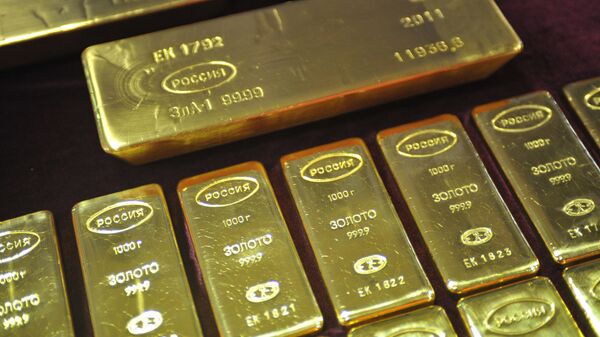The value of the Russian central bank’s gold reserves grew by $6.244 billion, or 5.2 percent in the month of April, reaching a value equivalent to over $126 billion, or 21.3 percent of the bank’s total reserves, recently released figures by the regulator reveal.
The growth spurt, caused in part by gold’s growing worth as a stable store of value amid the global economic downturn, helped total reserves grow by 0.45 percent in the month of April, to a total of $566 billion, even as currency assets dropped by $3.7 billion (to $439.9 billion) in the same month after falling another $6.9 billion in March. Overall, Russian reserves have grown a net 2.1 percent over the past four months.
In a related development, Russian regulators moved to issue general licenses for the free export of gold bullion last month, dramatically easing restrictions which previously required mining companies to apply for permits for each and every bullion export transaction. The decision was made following lobbying by gold miners, and the unprecedented drop in oil and gas prices, which make up the backbone of Russia’s traditional export earnings, amid the global downturn in economic activity.
The central bank’s international reserves, consisting of gold, foreign currency reserves and special drawing rights assets, are a type of rainy day investment fund enabling the Russian government to pay off foreign lenders, or make up for gaps in the budget during a crisis period.
The government committed about 800 billion rubles ($10.87 billion) in additional assistance to support businesses and families this week, including tax write-offs, salary loans, unemployment benefits, and childcare allowances and benefits, with an additional measures adding up to the tune of 1.5 percent of Russia’s GDP expected to be doled out to prop up the economy in the coming months.
Russia’s economic growth slowed to 0.9 percent in March after growing by 1.8 percent in January and February, with Moody’s expecting GDP to shrink by over 5 percent before the year is through as the consequences of the coronavirus and lower oil prices drop make themselves felt. Russia’s jobless rate hit 1.4 million in May, up from about 700,000 in January.



